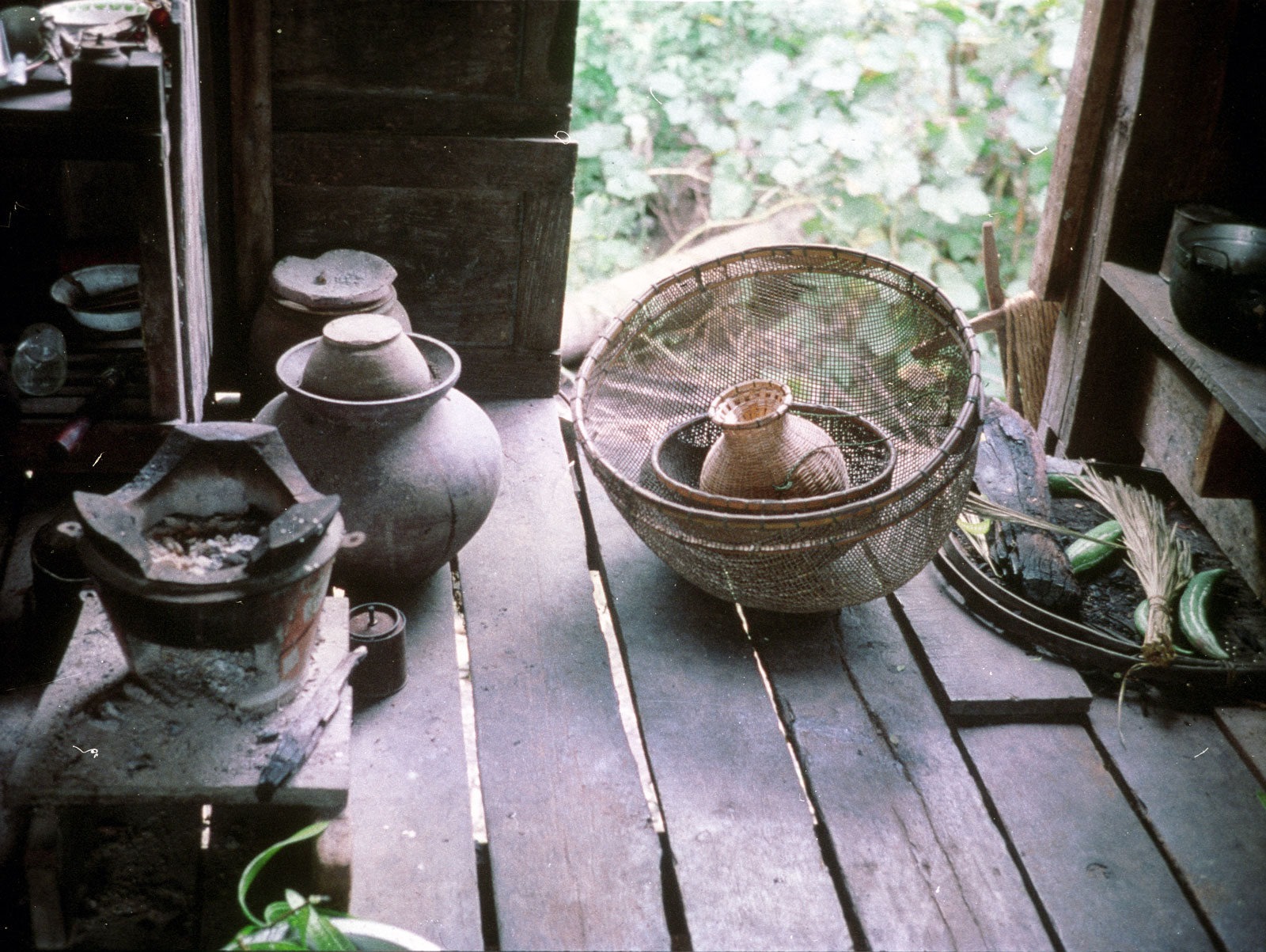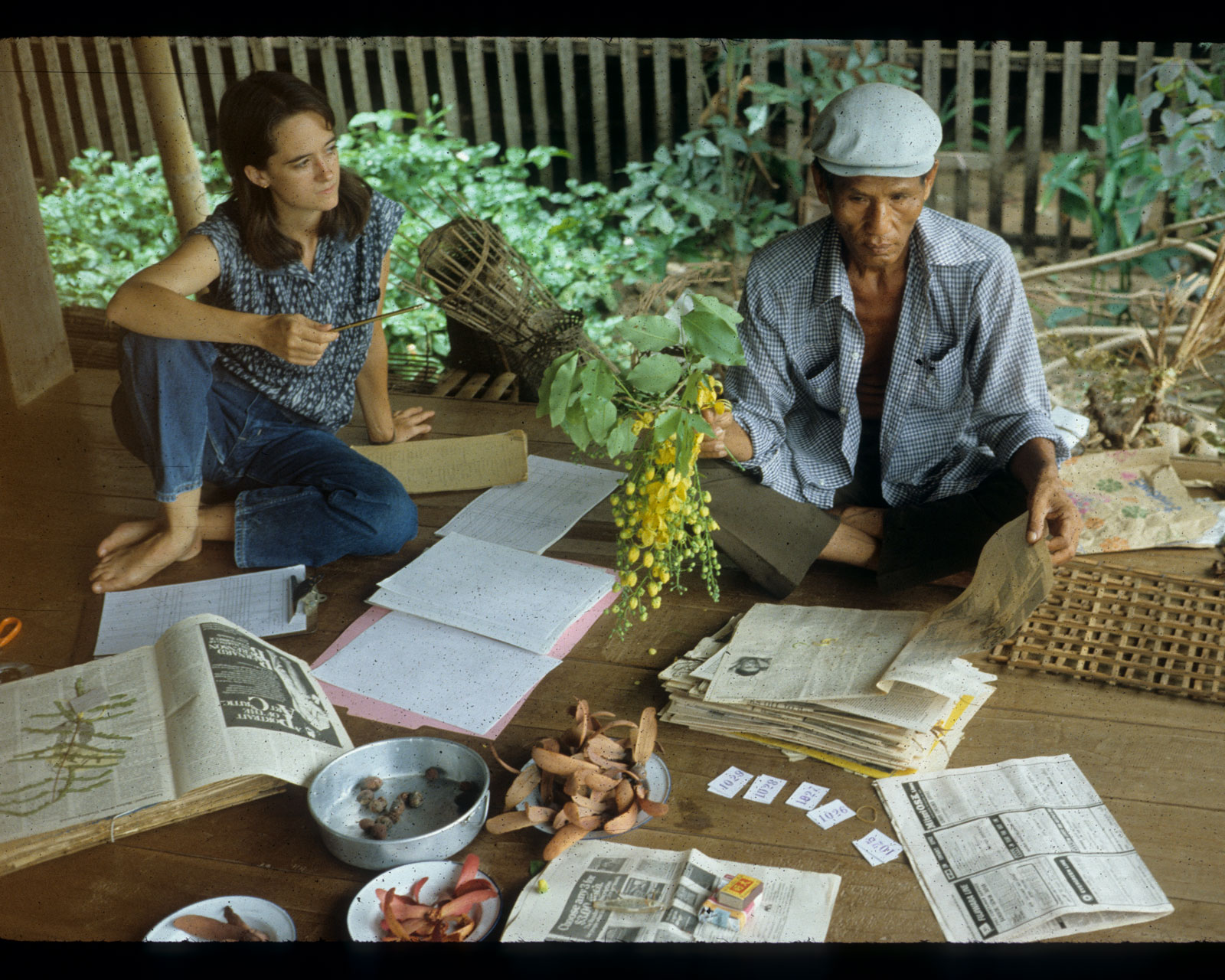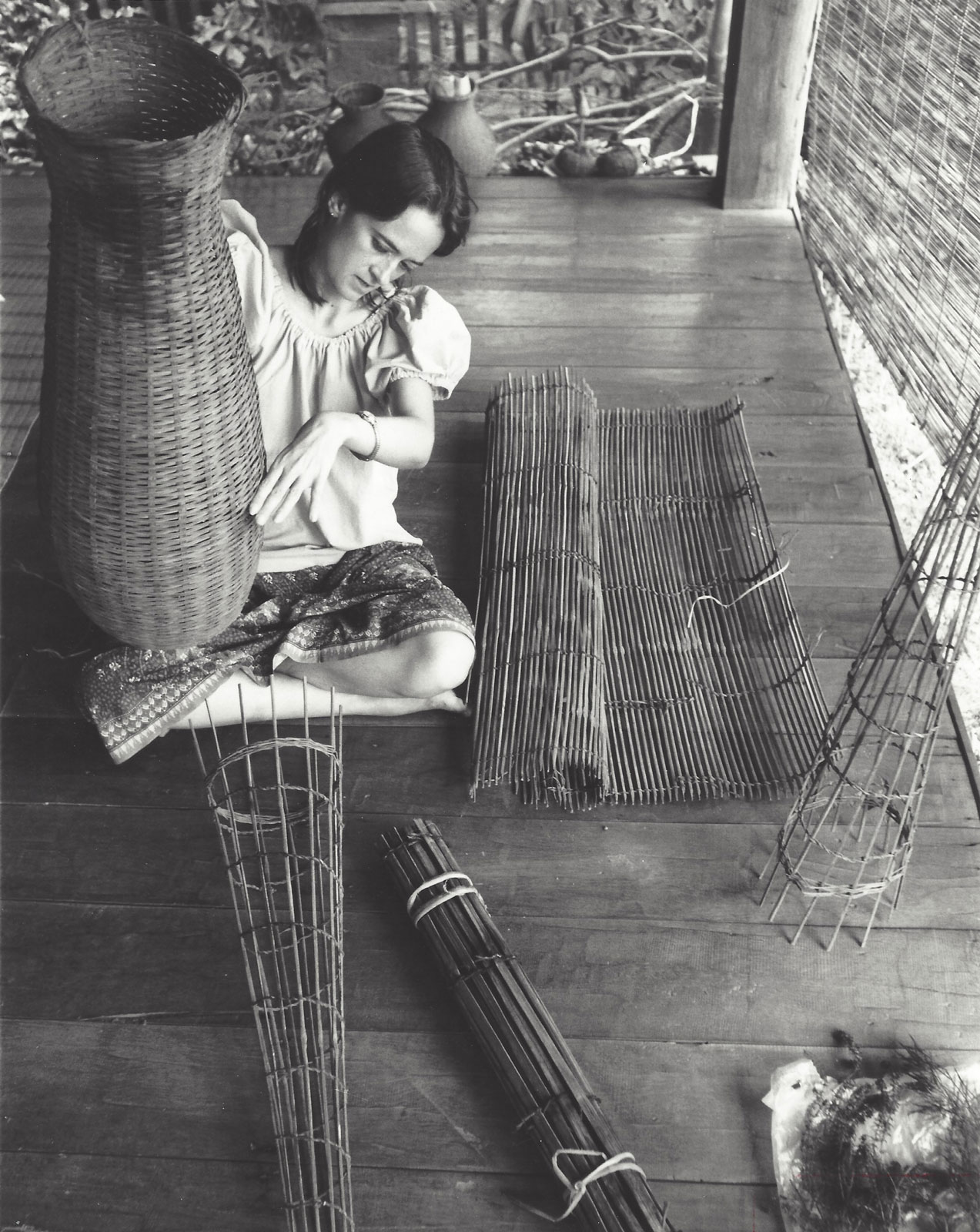Thai-Lao Ethnographic Collection

Curatorial Section
Research Discipline
Ethnography
Dates
2023 - 2024
Project Phase
Collection documentation
The collection was made from a base at Ban Chiang village in Udon Thani province, but objects were collected from 32 surrounding villages.
In 1981, Joyce White, who had been conducting field research in Thailand for 18 months in the village of Ban Chiang, received a telegram from the Penn Museum requesting that she make a collection of everyday items illustrative of traditional village life. Ban Chiang was the location for excavations by Penn Museum and the Thai Fine Arts Department in 1974 and 1975. White’s ethnobotanical research was part of the Penn Museum Ban Chiang Archaeological Project, and that work had prepared her well for the task.
Joyce had been working with a local farmer, Li Hirionatha, to collect and document traditional knowledge of plants in the region. Over the course of the final two months of that research, Joyce and Li meticulously put together a collection of representative objects of the area noting the name and function of each piece, as well as where it was purchased and when, and other data. The collection consists of examples of everything from ox carts and fishing traps to looms and ceramics.
In the summer of 2024, an opportunity arose to enhance the content of this Thai-Lao collection. Thai-Isaan Material Culture Specialist, Nichanan Klangwichi, was able to come for three months to the Penn Museum as part of the Ban Chiang Project’s “Year of Botany” program. She updated and expanded the cataloging of the collection drawing on the museum’s in-house expertise as well as consulting with visiting Thai botanists, talking to the local Lao community in Philadelphia, and collaborating with museum volunteers. Object names and villages are now in both English and Thai. The descriptions include fuller cultural context about how the objects were used and identify the specific plant names for the various materials employed in their production. Many of the objects also have bibliographic references for further study. This information is now available to scholars and the public through the Museum’s Online Collections Database.


Researchers
- Stephen A. Lang
Lyons Keeper of the Asian Collection | Team Leader - Joyce C. White
Consulting Scholar at Penn Museum | Collector - Nichanan Klangwichai
Udon Thani City Museum | Visiting Expert
- Ban Chiang
- Ban Dong Yen
- Ban Phon Sung
- Ban Pueai
- Ban Tha Chuang
- Ban Khon Sawan
- Ban Pu Lu
- Ban Om Kaeo
- Ban Thung Fon
- Ban Kham Phakkood
- Ban Bun Mi
- Ban Sam Kha
- Udon Thani (City)
- Ban Ya
- Ban Nong Mek
- Ban Kham Yang
- Ban Nong Lat
- Ban Yang Ngam
- Ban Bong Nuae
- Ban Dun
- Ban Kham Or
- Ban Don Tan
- Ban Non Sung
- Ban Na Di
- Ban Non Sao Khwan
- Ban Don
- Ban Chiang Khruea
- Ban Tong
- Ban Dong Yang
- Ban Kham Ta Na
- Ban Phon Ngam
- Ubon Ratchathani (City)
- Natural History Investigations at Ban Chiang Expedition Magazine Volume 24 | Issue 4
Work-study students and volunteers are needed for scanning the film archives.


